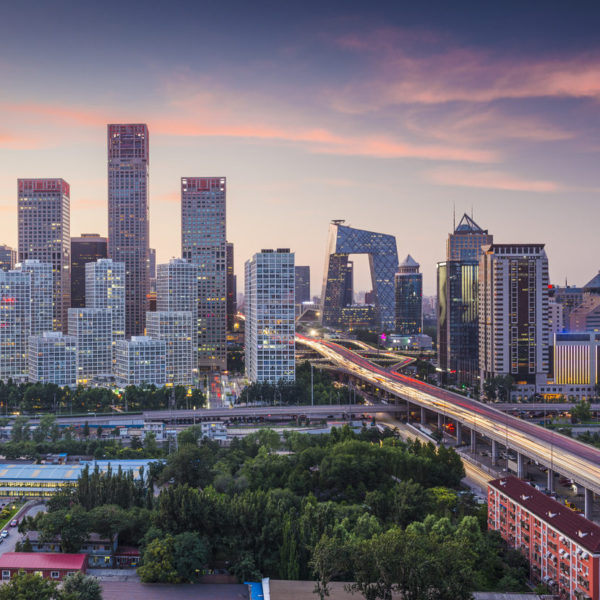Transforming Beijing through eco-urbanisation: the development of Xiongan New Special Zone , China’s ‘second capital’
Zhan Wang, Xiangzheng Deng, Cecilia Wong and Jiancheng Chen
This is the final of a series of three blogs by the research team of the project Eco-Urbanisation: Promoting Sustainable Development in Metropolitan Regions in China, describing the opportunities offered by green infrastructure in supporting Beijing’s adaptation to climate change.

China’s National New Urbanization Plan (2014-2020) was published on Xinhua News Agency’s website on 16 March 2014. The ‘new-type of urbanisation’ model is based on seven principles: human-centered and equity; coordinated urban-rural development; optimal resource allocation; environmental-friendly ecological-civilisation; cultural heritage; market allocation under government direction; and integrated planning and orderly implementation of urbanisation. This framework has a strong focus on the renewal of shanty towns as well as state-owned mining, forestry and cultivated regions to raise living standards by providing better public services, improving urban construction quality and promoting the development of green, human-centred smart cities.
These objectives will require an innovative governance approach to coordinate urban-rural development in an environmentally sustainable manner. This framework also highlights some key issues in the countryside such as agricultural modernisation and institutional reforms to address demographic changes, limited land use, financial investment, adequate housing and ecological conservation. Despite the comprehensive nature of this plan, there is a lack of clear guidance on how to move towards such a sustainability pathway. Indeed, as Beijing’s repeated struggles with smog testifies, the city is still has some distance to go for these ambitions to be attainable. However, one potential sign of progress took place on 26 February 2015 when President Xi visited Beijing municipal government and made a strong commitment to restore the environment of the Beijing-Tianjin-Hebei region, where rapid economic growth has been accompanied by pollution and deteriorating air quality.
The term ‘eco-urbanisation’ has been coined by our research team to highlight the need to shift toward an ecologically-oriented approach to urbanisation, addressing the challenges of emerging urban forms through the adoption of an integrated land use management framework to achieve sustainable development (Wang, Deng & Wong, 2016). Eco-urbanisation targets four central aspects of the climate change response to support adaptation – urban resilience, sustainable consumption of resources, integrated land governance and inclusive economic growth aligned with the sustainable pathway.
On 1 April 2017, the national government released the plans for what will be the second largest new special zone, Xiongan. Designed as a ‘second capital’, the aim is to alleviate the increasing social, economic and ecological pressure of development on Beijing itself. Driven by the national government’s desire to develop a pilot to demonstrate a viable pathway towards greater urban sustainability, Xiongan new special zone is about 125 kilometers away from Beijing on the southwest corner of the triangle of Beijing-Xiongan-Tianjin region. The plan will ultimately cover a total of 2,000 km2 and accommodate between 2 and 2.5 million people, with a threshold of 1,500 people per km2.
As stated by President Xi, there are seven detailed aspects of the Xiongan Plan: 1) to develop a green, modern and smart new city; 2) to construct an ecological and environmentally friendly city; 3) to develop high-technology industries; 4) to provide high quality public services; 5) to construct an efficient transportation network; 6) to promote institutional reform to maximise market allocation; and 7) to encourage deeper collaboration on an international level. Unlike the previous plan to construct a sub-centre at Tongzhou District in the east side of Beijing, this plan is far more ambitious and is likely to have a profound impact not only on Beijing and the broader Beijing-Tianjin-Hebei metropolitan region, but may also shape the future development of East Asia.

By following the government’s strategic plan and the concept of eco-urbanisation, we analysed three scenarios for Beijing-Tianjin-Hebei’s future regional development, based on different assumptions on the development trajectories of the Xiongan New Special Zones. These scenarios balance competing economic and environmental demands. Scenario (1) envisages a “smooth” context of “environmental equity: equitable eco-efficiency” (Wang et al., 2016), where the environmental impacts of Xiongan’s development will be less than the lowest regional level per unit of GDP. This is based on the assumption of equitable spillovers of environmental effects across neighbourhoods. Scenario (2), the “ideal” case, assumes a model of “environmental governance: equitable environmental risks” (Wang et al., 2016) where regional environmental risks cannot be influenced by Xiongan’s development in terms of determining a stable return on every unit of ecological investment in the future. In this case, environmental risks are spread equitably across neighbourhoods, resulting in a better environmental outcome overall. Finally, scenario (3), “environmental earning: energy efficiency optimisation” (Wang et al., 2016a), seeks an “expedient” approach to minimise the environmental impacts on the region. In this case, increase energy consumption and greater inequality in terms of greenhouse gas (GHG) emissions among different neighbourhoods in the region raises the environmental risks, but improved economic efficiency also leads to higher incomes, innovation and energy efficiency.
We compared the forecasting results for these three scenarios by estimating the Environment Kuznets Curve of air pollution and energy consumption indicators for urban and rural area development until 2030. We found that trade-offs will occur in urban and rural areas under different scenarios. If in future environmental governance can achieve the equitable risks as depicted in the ideal scenario (2), eco-urbanisation in Beijing-Tianjin-Hebei will be achieved by 2030. The expedient case of scenario (3), on the other hand, is more beneficial for urban-rural coordinated development, while the smooth case of scenario (1) is more beneficial to the less developed areas in the region.
Based on the findings from these different scenarios, Xiongan new special zone plan presents a range of opportunities as a demonstration pilot pathway of eco-urbanisation (Wang et al., 2017). However, these are based on broad scenario building and further research is sorely needed to: 1) clarify the specific ecological function of a region based on scenarios analysis of population growth; 2) consider functional landscape architecture to support comprehensive policies for urban growth within the environmental capacity of a region; 3) seek higher industrial standards and advanced regulations in areas such as environmental evaluation and monitoring; 4) construct environmental infrastructure, in particular a smart resource recycling system, by employing innovative and advanced high-technologies; and 5) implement strict institutional and regulatory planning regime to maximise efficient market allocation for regional development.